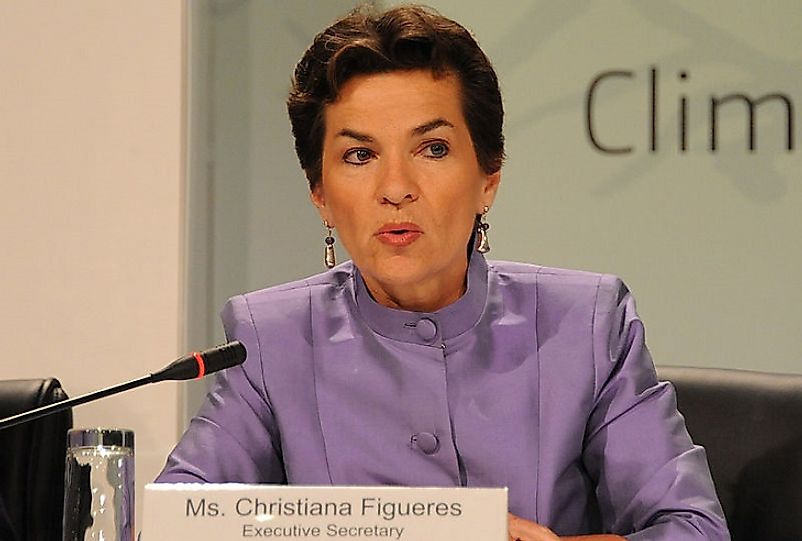What Was The Kyoto Protocol?

5. Background
The Kyoto Protocol was an international agreement which was signed in Kyoto, Japan in 1997. The agreement mandated 37 industrialized countries and the European Community, made up of 15 nations at the time of the Kyoto negotiations, to cut their greenhouse gas emissions. The protocol, however, exempted more than 100 developing countries, including China and India, from the mandatory reductions.
Kyoto originated from the UN Framework Convention on Climate Change (UNFCCC), which was signed at the Rio Earth Summit in 1992. The UNFCCC is one of the three ‘Rio Conventions’. The other two conventions are the Convention on Biological Diversity and the Convention to Combat Desertification. Conference of Parties (COP) is the supreme decision-making body of the Convention. The COP meets every year to review the Convention’s implementation. The first COP took place in Berlin in 1995. It was at the COP3, when the Kyoto Protocol was adopted.
4. Terms and Conditions
There were two key conditions for the Kyoto protocol to come into effect. The first condition was that the protocol should be ratified by at least 55 countries involved in the UNFCCC. This condition was met on May 23, 2002, when Iceland became the 55th country to ratify the protocol.
The second condition was that the ratifying countries should account for at least 55% of the world’s total Carbon Dioxide emissions in 1990. With Russia ratifying the protocol on November 18, 2004, the second condition was also satisfied and the Kyoto Protocol came into effect on February 16, 2005.
The ratifying countries agreed to cut their annual carbon discharges as measured through their releases of six greenhouse gases by varying amounts, aimed at averaging 5.2% below 1990 levels. These six gases identified were Carbon Dioxide (CO2), Methane (CH4), Nitrous Oxide (N2O), Sulfur Hexafluoride (SF6), Hydrofluorocarbons (HFCs), and Perfluorocarbons (PFCs).
The ratifying countries were required to decrease their carbon emission during the Protocol’s first commitment period of 2008 to 2012. The countries could use ‘flexibility mechanisms’ (Kyoto Mechanisms) to meet their commitments. Flexibility mechanisms include International Emissions Trading (IET), Joint implementations (JI) and Clean Development Mechanism (CDM).
3. Accomplishments
The Kyoto Protocol was the world’s first major global emissions reduction treaty, and increased awareness and international cooperation towards resolving the climate change crisis. This was the first treaty to legally bind countries to their commitments on greenhouse gas emission reductions.
Christiana Figueres, while Executive Secretary of the UNFCCC, stated, “The Kyoto Protocol was a remarkable achievement in many ways. It not only underscored the scientific reality that greenhouse gas emissions need to fall. But it also put in place pioneering concepts, flexible options, practical solutions and procedures for accountability that we often take for granted today”.
2. Controversies and Shortcomings
Many protocol signatory countries succeeded in cutting their emissions. As a result, the sum of emissions from nations with Kyoto targets fell. However, the global atmospheric Carbon dioxide levels have increased enormously. Most of this increase has come from the developing countries and emerging economies, which were asked to comply voluntarily in the protocol. By some estimates, if one takes in to account, the total carbon footprint of each nation, including imports and excluding exports, the success of Kyoto would appear very poor. For example, Europe's savings will be reduced to 1% and the developed world as a whole will see its emissions rise by 7% during 1990 to 2008 period.
Another failure of the treaty was that it could not gain a commitment from the United States, one of the largest sources of carbon emission. In 2011, Canada, Russia, and Japan announced that they would not take on further Kyoto targets. Thereafter, Canada formally withdrew from the protocol in December of 2011.
1. Major International Climate Change Treaties Since Kyoto
Although the United States did not ratify the Kyoto Protocol, it was a leader in forming the Asia-Pacific Partnership for Clean Development and Climate, an international agreement announced in July of 2005 at a meeting of the Association of South East Asian Nations (ASEAN). The COP21, the Paris Climate Conference, was held in Paris, France, in December of 2015. At this meeting 195 countries adopted the first ever universal, legally binding global climate agreement. This agreement sets out a global action plan to put the world on track to avoid dangerous climate change by limiting global warming to below 2° Celsius. The agreement is due to come into force in 2020.











